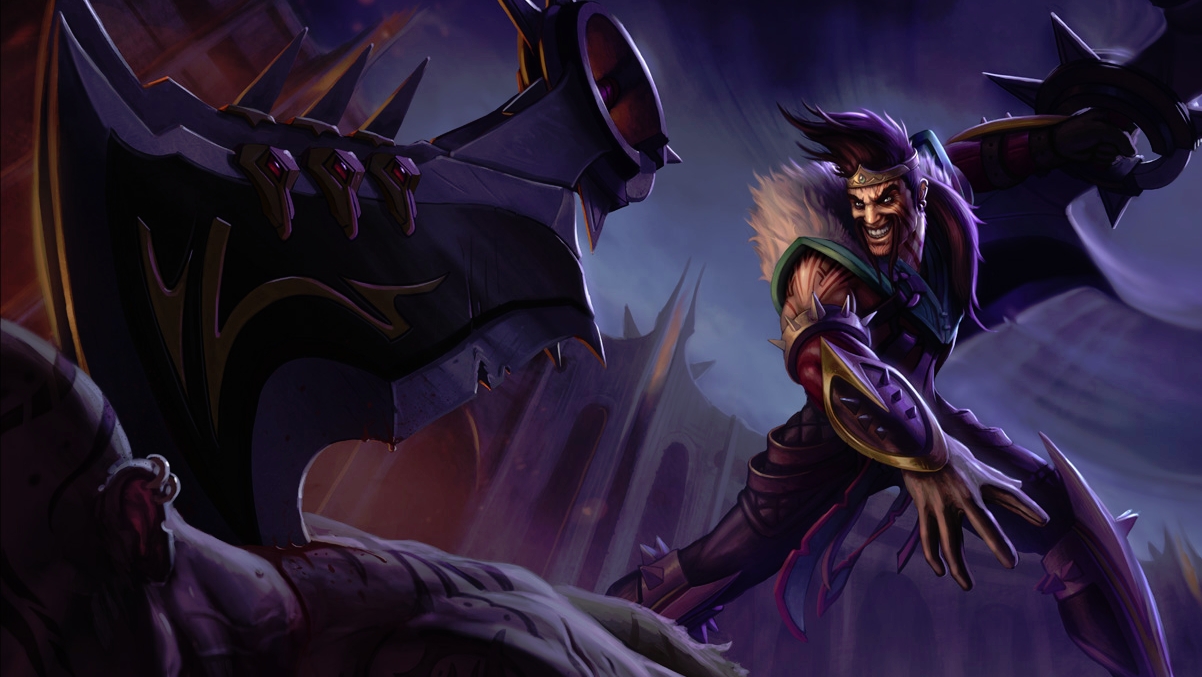More money means more problems for LoL esports

The biggest drama for League of Legends this year might not be Faker reclaiming his rightful throne at the top of the world. It might not even be China's utter collapse across all fronts (even their peers in Dota 2 were drummed off the stage by the European teams at the Frankfurt Major). It may simply be the tidal wave of money expected to hit the shores of the North America LCS in a couple months.
Every passing week brings name and numbers that would've been unbelievable just a year ago: Mark Cuban playing against Intel CEO Brian Krzanich in a showcase ARAM game at IEM San Jose, Svenskeren rejecting H2K's domestic bid of 5.5k (presumably in Euros) a month, Fnatic unable to hold onto crowd favorites Huni and Reignover thanks to a counter-offer that was more than a magnitude over what they were willing to spend... and that's not even the biggest upset in this preseason scramble.
Coast's sale of their LCS spot to NRG Esports was announced on Daily Dot just a few weeks ago—and owners Andy Miller and Mark Mastrov just so happen to also own NBA franchise Sacramento Kings. Their seven-figure purchase of the esports slot was the catalyst for both hype and drama of the highest order, replacing a heavily maligned Coast with the breathtaking news that they'd be trucking over mid laner GankedByMom from Korea's Jin Air Green Wings, along with acquiring the services of top laner Impact and AD carry Altec. North American rookies Moon and Konkwon round out the roster, largely in the shadows of their new compatriots.
If anything, their support staff looks even better. Former Cloud9 coach Charlie Lispie and Origen Worlds coach Tadayoshi "Hermit" Littleton, backed by a full-fledged staff of analysts, combine the best performance records of two continents onto a single team. Though, obviously, only time and actual games can tell if the two'll work together well, much less with the team as a whole, NRG's talent acquisition is undoubtedly one of the most aggressive bids ever unleashed in the professional circuit.
But that's just the hype half of the NRG story. Their inclusion in the NA LCS also brings up a whole heaping pile of drama—courtesy of who they stepped over to get there.
Challenger conflicts
The way it's supposed to work for the LCS is: a team climbs the ranked fives ladder, punches their way through the Challenger Series, and finally has a chance to take down the worst-performing LCS teams for the right to bask in the regional spotlight. That system makes a lot of inherent assumptions about the scene, of course—namely, that the majority of NA LCS players will be North American players. It measures the primary virtue of a regional contender in their accomplishments within that region's servers and competitive circuits, and assumes that teams'll be looking internally for candidates to fill in their rosters.
As of this year, those assumptions are baseless. Though Riot's region restrictions and mandated quota of three domestic players per team prevents a singularly dominant region like South Korea from reenacting the fall of western StarCraft, the incentive structures for top teams have effectively torn apart the Challenger scene anyhow. LCS teams have a habit of outright poaching top-level players from promising Challenger teams (and are safe from reprisal of vice-versa, as was demonstrated during the Renegades debacle a few months ago), thereby neutralizing a threat before it can form. Challenger teams will poach from each other as well to neutralize threats to their LCS bid.
Keep up to date with the most important stories and the best deals, as picked by the PC Gamer team.
Meanwhile, the fame and marketing leverage of a mid- to top-level western team is now such that their organizations will gladly bid staggering thousands of dollars on contracts from abroad for the chance to ride the hype train of particularly famous players. And by doing so, they hurt the Challenger scene yet further by indirectly devaluing the perceived quality of domestic players.

None of that fits with Riot's intended narrative for the NA or EUCS: the scrappy ragtag band of domestic ladder upstarts that made good. That was supposed to be the story for Pekin Wolf, DontMashMe, Konkwon and Cris as they spearheaded Coast's bid at re-entering the LCS—only jungler Shrimp was a foreign player, ranked Challenger in Korea. But when the dust settled and the money was cashed, NRG only kept Konkwon going into 2016.
Cue the outcries. The underdog story is one of the few beloved elements of the oft-maligned Challenger scene, and it seemed as if NRG was either in violation of Riot's rules—or Riot was willing to look the other way to keep new investors happy. NRG's explanation was that they bought the LCS spot, not the team—adhering to the word of the law, rather than the spirit. Rumors also abound that the 2016 season was going to bring fundamental changes to the structure of the LCS too—from jokes that the incredibly aggressive early-game of Patch 5.22 was meant to allow best-of-3 series in the LCS, to speculation that Riot was going to switch the LCS over to a franchise system in emulation of other western sports (and thereby making the NRG buyout a legitimate transfer of ownership).
None of which is necessarily good for the players, especially not the rookies. There exists no talent scouting system in western League. No farm circuit to develop domestic talent to an acceptably pro level. And with the proof that, at any time, rich investors can buy your team out and dump you without compensation, even the LCS pros are scared of what the future might hold for them.
Drafting and trading
Esports might be reaping a multi-million dollar harvest, but it's going to be a slash-and-burn deal with poor long-term forecasts if more isn't done to protect the people actually playing the game. If the speculation holds true and the LCS spots become franchises, it might be a defensive action on Riot's part, minimizing the distorted incentives that've plagued the system since 2013. But that alone isn't enough if there's no advancement system coupled to it for the amateur players outside of the LCS proper.
This is, of course, a problem largely solved by mainstream sports, thanks to the various systems of talent acquisition and drafts. You won't ever expect minor league baseball's San Jose Giants to challenge even the Reds or the Phillies for a spot in the major leagues, for instance—but the SJ Giants serve as a farm team for the legendary San Francisco Giants, and a way to train new draft picks up to standard. College-tier teams in basketball also don't ever expect to have to take on even the worst NBA team head-on—but the relationship between the NBA proper and NCAA is extremely intimate, nonetheless, with the most successful players given a shot at the big leagues through the NBA draft—right alongside foreign prospects, in fact.
Emulating this for the fledgling esports scene offers two advantages: first and foremost, it directly encourages organizations to invest effort and attention into the lower-tier system, as it'll be their primary source of future talent. Even as Challenger teams no longer have a chance to outright replace an LCS team, their individual players are afforded much greater opportunities for being standout performers—much more so than they would've as a new LCS team, even, as MRN, XDG and others have famously had funding problems even as they've won their spots. Second, it offers a solution to the transparency issues that've plagued esports—the negligent owners and abusive contracts we keep hearing about every few months. A formalized draft system would standardize player contracts, setting a more acceptable baseline than the poor deal that European players currently get (5.5k a month might be a major temptation to a freelance writer like me, but hardly fitting for a player of Svenskeren's caliber).
There is, of course, a third and often unmentioned advantage: improving local solo queue. The difference between League of Legends as a troll-happy past-time and League of Legends as an opportunity is reflected in its playerbase at large. Korea's midnight queues (when the young and team-ineligible players are software-locked out of the game) and China's Ionia server are both famously temperamental scenes—but temperamental in the sense that the players demand the best out of each other, because the benefits of doing well are tangible and way beyond a shiny post-season border and skin. Doing well means attracting the attention of Samsung and SKT, who are more than happy to support a b-tier farm team until they need their talents.
But across the oceans? TSM isn't recruiting. Fnatic isn't looking. And "substitutes" are synonymous with permanent streamers. For the sake of their esports's future, Riot has to figure out a solution to a problem Blizzard's thus far unable to answer: once you've made your game sustainable for your top players, how do you help everybody else?

PC Gamer Pro is dedicated to esports and competitive gaming. Check back every day for exciting, fun and informative articles about League of Legends, Dota 2, Hearthstone, CS:GO and more. GL HF!

